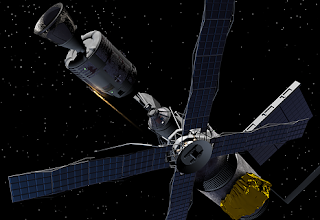100 Amazing Inventions :
11. Who invented the food processor?
FOOD PROCESSOR:
Food processors are subsidiary appliances that are used in kitchens everywhere. Their main purpose is making meal preparation much easier and faster for the cook. Surprisingly, the food processor was not invented by a scientist, but by a salesman! Pierre Verdon was a french catering company salesman, who travelled all over the country watching his customers slice vegetables, grind spices and blend dressings by hand.
 |
| Food Processor |
This inspired him to invent a machine that would do these jobs. His device, which he introduced in 1971, was a basic model that could chop, slice and knead dough.
Carl Sontheimer, an engineer, refined Verdon's machines to produce the popular food processor known as Cuisinart.
Today's food processors are equipped with several settings to knead, shred, grind, chop, slice, mix, blend, shave, and pulverize the different types of ingredients needed for a meal.
12. Why is the MRI scan extremely important in medicine?
MRI Scan:
The letters MRI stands for Magnetic Resonance Imaging. An MRI scan is a medical investigation that uses an exceptionally strong magnet and radio frequency waves to generate images of our body.
 |
| MRI Scanner |
The foundations for this technology were laid during the year 1946, when Felix Bloch and Edward Purcell independently discovered the magnetic resonance phenomena. The idea of using nuclear magnetic resonance to look inside the body was actually credited to Raymond Damadian.
 |
| MRI Scanner |
However, the most significant advancement in MRIs occurred in 2003, when Paul C. Lauterbur and Peter Mansfield developed MRIs as a diagnostic tool. The development of MRI revolutionized the medical world.
13. Why do space stations fire our imagination?
SPACE STATION:
A space station is a spacecraft that is capable of supporting a crew, and is designed to remain in space, orbiting the Earth, for long periods of time.
In a space station, astronauts can live and work in space for months, or even years. They carry out research and examine the behavior of materials and living things in a near weightless environment . They also study the effect of space flight on the human body. Early space stations such as Russia's Salyut 1, and the US Skylab were built on Earth and launched into orbit as complete units.
Larger stations such as Mir and the international Space Station are grouped together in orbit from modules or sections that are ferried up from Earth into space, one at a time.
Space stations have also been used for both military and civilian purposes.
14. What is remarkable about the CT Scan?
CT Scan:
The letters CT stand for 'Computerized Tomography'. A CT scan uses a computer that takes data from several X-ray images of structures inside the body, and converts them into pictures on a monitor.
A CT scanner emits a series of narrow beams through the human body as it moves through an arc, unlike an X-ray machine which sends just one radiation beam. The final picture is far more detailed than an X-ray image.
Godfrey Hounsfield is considered to be the inventor of CT scan. By 1971, it was being used for clinical purposes. CT became widely available by 1980s.
 |
| CT Scanner |
CT scans are able to detect some conditions that X-rays cannot, since CT scans can show a 3D view of the section of the body being studied. CT scans are also useful for monitoring a patient's progress during treatment.
15. How were e-mails invented?
E-MAIL:
Actually, e-mail was never invented - it just evolved from very simple beginnings. An e-mail just puts a message in another user's computer in a spot where it can be seen when the user is logged in. It's just like leaving a note on someone's desk.
Before the Internet, email could only be used to send messages to different users of the same computer. Once computers began to connect each other over networks, however, the problem became a little more complex - messages had to be addressed to the receiver, and sent to their computers. To do this, there had to be a way to indicate to whom letters should go. This is why Ray Tomlinson is credited with inventing e-mail in 1971. He picked the @ symbol from the computer keyboard to separate the name of the user from the user's machine.
Today, e-mail remains the most important application of the internet, and the most widely used facility it has. It is estimated that more than 600 million people communicate using email.





